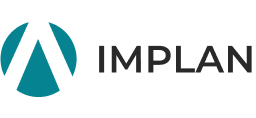Auxiliaries are establishments whose employees are primarily engaged in providing various management or support services to one or more establishments of the same enterprise. Thus, within an enterprise, the auxiliary establishments are distinct from those establishments that are primarily engaged in producing goods and from those that are primarily engaged in providing services for personal or household use or for other enterprises. For example, an automotive repair shop or storage garage operated by an enterprise primarily for repair or storage of its own vehicles qualifies as an auxiliary. In addition to its primary activity of supporting the operations of the enterprise, an auxiliary may also provide services to the general public or to other business firms as a secondary activity. One major change introduced by NAICS is that auxiliaries are now treated as establishments classified by their production processes. Central Administrative Offices (CAOs) are included in NAICS 55, Management of Companies and Enterprises. Certain other auxiliaries are now treated as part of the industry that has a similar production function. For example, an accounting department that is a separate establishment would now be included in the accounting services industry. The services provided by auxiliaries are now included in output, measured by expenses to provide those services. Under the SIC, the services provided by auxiliary establishments were not included in output, and their expenses were included with the expenses of the industry served by the auxiliary. (BEA)



